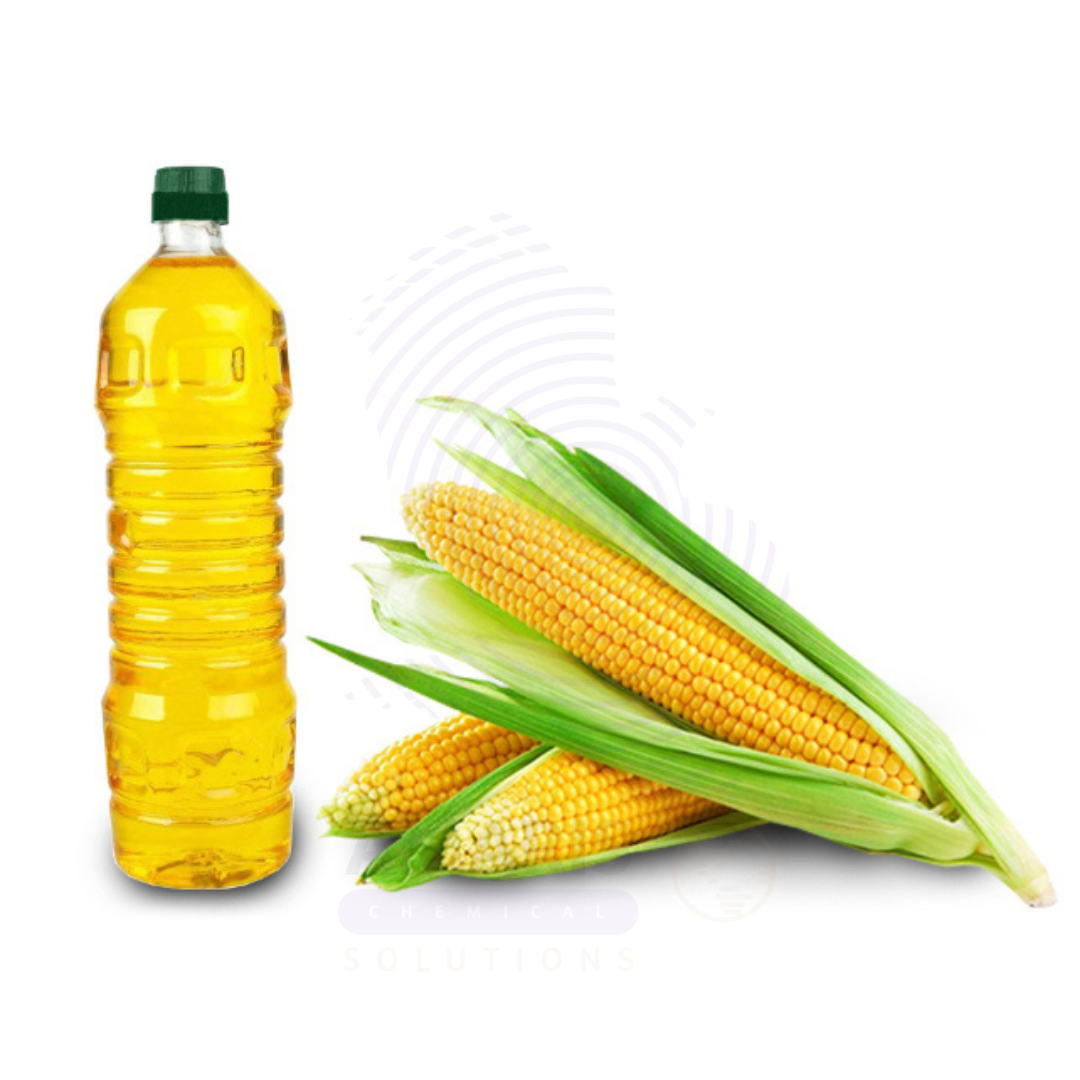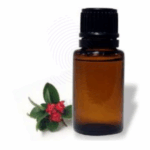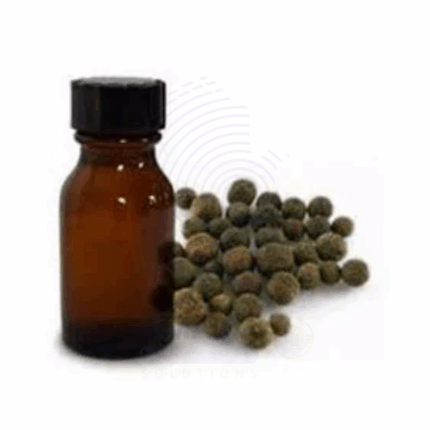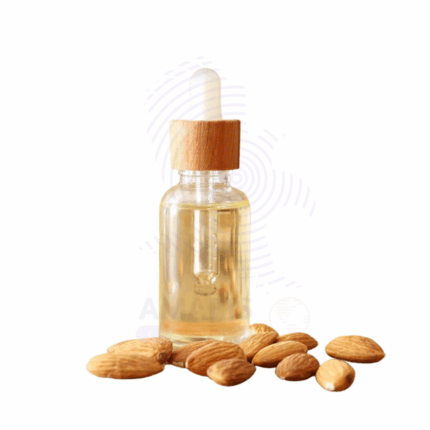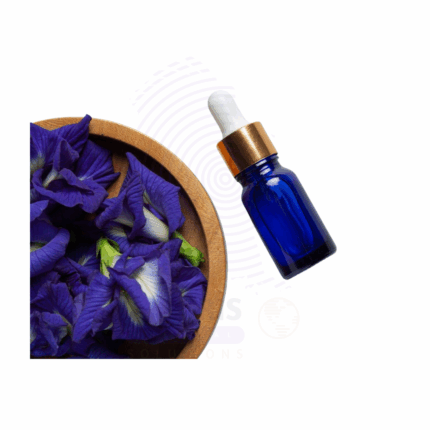Corn Oil
Corn Oil is a versatile, plant-based oil extracted from the germ of corn kernels (Zea mays) through mechanical pressing and solvent extraction, followed by refining. It is light yellow in color with a mild, neutral scent and a high smoke point, making it suitable for culinary, industrial, cosmetic, and pharmaceutical applications. Rich in polyunsaturated fatty acids, especially linoleic acid, and vitamin E, corn oil is valued for its emollient, antioxidant, and cholesterol-lowering properties.
Commonly used as a cooking and frying oil, it is also widely incorporated into margarine, salad dressings, and processed foods. In cosmetics, it functions as a skin-conditioning agent and emollient. Corn oil further finds use in pharmaceutical formulations, biofuel production, and industrial lubricants.
Corn Oil
Primary Uses
Food and Beverage Industry
- Used as a frying and cooking oil due to its high smoke point and neutral flavor.
- Incorporated into margarine, spreads, and salad dressings.
- Applied in snack and processed foods as a fat source.
- Used as a carrier oil for fat-soluble flavorings and additives.
- Common in bakery products for moisture retention and softness.
Cosmetics and Personal Care
- Used in creams and lotions for its emollient and moisturizing properties.
- Added to soaps and cleansers for skin-softening effects.
- Included in hair care products to improve shine and hydration.
- Used in lip balms and body oils as a nourishing base oil.
- Functions as a carrier oil for essential oil dilution in massage and skincare.
Pharmaceuticals
- Used as an excipient and carrier oil in soft-gel capsules and topical preparations.
- Functions as a solubilizing agent in oral and dermal formulations.
- Included in nutritional supplements for its linoleic acid and vitamin E content.
Industrial and Chemical Applications
- Used in biodiesel production as a feedstock oil.
- Employed in the manufacture of lubricants, inks, and plasticizers.
- Functions as a base oil in certain pesticide and herbicide formulations.
- Used in surfactant and detergent manufacturing.
Secondary Uses
Animal Nutrition
- Added to livestock and poultry feed as an energy-rich fat source.
Soap and Candle Making
- Used in soap bases for moisturizing and conditioning benefits.
Occasionally used in natural candle formulations as a softener or binder.
Basic Identification Attributes
- Botanical Name: Zea mays
- Common/Trade Name: Corn Oil
- INCI Name: Zea Mays (Corn) Oil
- CAS Number: 8001-30-7
- HS Code: 1515.21
- Synonyms: Maize Oil, Zea Mays Oil
Physical & Chemical Properties
- Physical State: Liquid oil
- Color & Odor: Light yellow to golden; neutral odor
- Solubility: Insoluble in water; soluble in oils and organic solvents
- Smoke Point: 230°C (446°F) approx.
- Iodine Value: 100–130
- Saponification Value: 187–193 mg KOH/g
- Main Components: Linoleic acid, oleic acid, palmitic acid, vitamin E (tocopherols)
Safety & Hazard Attributes
- GHS Classification: Not classified as hazardous
- Toxicity: Non-toxic; safe for topical and dietary use
- Allergen Information: Not a major allergen; derived from corn
- Exposure Limits: None under normal conditions
Storage & Handling Attributes
- Storage Conditions: Store in a cool, dry place away from light and heat
- Container Type: Food-grade containers or drums with airtight seals
- Shelf Life: 12 to 18 months under proper storage conditions
- Handling Precautions: Keep sealed to avoid oxidation and rancidity
Regulatory & Compliance Attributes
- Compliant with FDA, EFSA, and other food and cosmetic regulatory standards
- Approved for use in food, cosmetic, and pharmaceutical formulations
- Produced in GMP-compliant facilities
- Non-GMO and organic versions available upon certification
Environmental & Health Impact
- Biodegradability: Biodegradable under normal environmental conditions
- Ecotoxicity: Low; safe for standard use
Bioaccumulation: Not expected
Safety Handling Precautions
- PPE Required: None required for standard handling
- Handling Guidelines: Avoid contamination; store in tightly sealed containers
First Aid Measures
- Inhalation: Not applicable
- Skin Contact: Safe under normal use; rinse if irritation occurs
- Eye Contact: Rinse with water if splashed in eyes
- Ingestion: Safe if food-grade; seek help if non-food-grade oil is consumed
Firefighting Measures
- Fire Hazards: Combustible oil; avoid ignition sources
- Extinguishing Media: Dry chemical, CO₂, foam
- Special Precautions: Use protective gear; oil fires may reignite
Hazardous Combustion Products: Carbon monoxide, carbon dioxide


 Preservatives(food)
Preservatives(food) Flavor Enhancers
Flavor Enhancers Acidulants
Acidulants Sweeteners
Sweeteners Antioxidants
Antioxidants Colorants(food)
Colorants(food) Nutraceutical Ingredients (food)
Nutraceutical Ingredients (food) Nutrient Supplements
Nutrient Supplements Emulsifiers
Emulsifiers
 Collectors
Collectors Dust Suppressants
Dust Suppressants Explosives and Blasting Agents
Explosives and Blasting Agents Flocculants and Coagulants
Flocculants and Coagulants Frothers
Frothers Leaching Agents
Leaching Agents pH Modifiers
pH Modifiers Precious Metal Extraction Agents
Precious Metal Extraction Agents
 Antioxidants(plastic)
Antioxidants(plastic) Colorants (Pigments, Dyes)
Colorants (Pigments, Dyes) Fillers and Reinforcements
Fillers and Reinforcements Flame Retardants
Flame Retardants Monomers
Monomers Plasticizers
Plasticizers Polymerization Initiators
Polymerization Initiators Stabilizers (UV, Heat)
Stabilizers (UV, Heat)
 Antifoaming Agents
Antifoaming Agents Chelating Agents
Chelating Agents Coagulants and Flocculants
Coagulants and Flocculants Corrosion Inhibitors
Corrosion Inhibitors Disinfectants and Biocides
Disinfectants and Biocides Oxidizing Agents
Oxidizing Agents pH Adjusters
pH Adjusters Scale Inhibitors( water)
Scale Inhibitors( water)
 Antioxidants(cosmetic)
Antioxidants(cosmetic) Emollients
Emollients Fragrances and Essential Oils
Fragrances and Essential Oils Humectants
Humectants Preservatives
Preservatives Surfactants(cosmetic)
Surfactants(cosmetic) Thickeners
Thickeners UV Filters
UV Filters
 Fertilizers
Fertilizers Soil Conditioners
Soil Conditioners Plant Growth Regulators
Plant Growth Regulators Animal Feed Additives
Animal Feed Additives Biostimulants
Biostimulants Pesticides (Herbicides, Insecticides, Fungicides)
Pesticides (Herbicides, Insecticides, Fungicides)
 Active Pharmaceutical Ingredients (APIs)
Active Pharmaceutical Ingredients (APIs) Excipients
Excipients Solvents(pharmaceutical)
Solvents(pharmaceutical) Antibiotics
Antibiotics Antiseptics and Disinfectants
Antiseptics and Disinfectants Vaccine Adjuvants
Vaccine Adjuvants Nutraceutical Ingredients (pharmaceutical)
Nutraceutical Ingredients (pharmaceutical) Analgesics & Antipyretics
Analgesics & Antipyretics
 Analytical Reagents
Analytical Reagents Solvents(lab)
Solvents(lab) Chromatography Chemicals
Chromatography Chemicals Spectroscopy Reagents
Spectroscopy Reagents microbiology-and-cell-culture-reagents
microbiology-and-cell-culture-reagents Molecular Biology Reagents
Molecular Biology Reagents Biochemical Reagents
Biochemical Reagents Inorganic and Organic Standards
Inorganic and Organic Standards Laboratory Safety Chemicals
Laboratory Safety Chemicals Specialty Laboratory Chemicals(Special Laboratory Equipment)
Specialty Laboratory Chemicals(Special Laboratory Equipment)
 Demulsifiers
Demulsifiers Hydraulic Fracturing Fluids
Hydraulic Fracturing Fluids Scale Inhibitors(oil)
Scale Inhibitors(oil) Surfactants(oil)
Surfactants(oil) Drilling Fluids
Drilling Fluids
 Dyes and Pigments
Dyes and Pigments Bleaching Agents
Bleaching Agents Softening Agents
Softening Agents Finishing Agents
Finishing Agents Antistatic Agents
Antistatic Agents
 Admixtures
Admixtures Waterproofing Agents
Waterproofing Agents Sealants and Adhesives
Sealants and Adhesives Curing Compounds
Curing Compounds Concrete Repair Chemicals
Concrete Repair Chemicals Anti-Corrosion Coatings
Anti-Corrosion Coatings
 Surfactants(cleaning)
Surfactants(cleaning) Builders
Builders Enzymes
Enzymes Solvents (Cleaning)
Solvents (Cleaning) Fragrances
Fragrances
 Electronic Chemicals
Electronic Chemicals Catalysts
Catalysts Lubricants
Lubricants Photographic Chemicals
Photographic Chemicals Refrigerants
Refrigerants Automotive chemicals
Automotive chemicals Pyrotechnic Chemicals
Pyrotechnic Chemicals
 Biodegradable Surfactants
Biodegradable Surfactants Bio-based Solvents
Bio-based Solvents Renewable Polymers
Renewable Polymers Carbon Capture Chemicals
Carbon Capture Chemicals Wastewater Treatment Chemicals
Wastewater Treatment Chemicals
 Pigments
Pigments Solvents(paint)
Solvents(paint) Specialty Coatings
Specialty Coatings Binders/Resins
Binders/Resins Additives
Additives Driers
Driers Anti-Corrosion Agents
Anti-Corrosion Agents Functional Coatings
Functional Coatings Application-Specific Coatings
Application-Specific Coatings
 Fresh Herbs
Fresh Herbs Ground Spices
Ground Spices Whole Spices
Whole Spices Spice Blends
Spice Blends Dried Herbs
Dried Herbs
 Leavening Agents
Leavening Agents Dough Conditioners
Dough Conditioners Flour Treatments
Flour Treatments Fat Replacers
Fat Replacers Decoratives
Decoratives Preservatives(baking)
Preservatives(baking)
 Plasticizers & Softeners
Plasticizers & Softeners Reinforcing Agents
Reinforcing Agents Adhesion Promoters
Adhesion Promoters Vulcanizing Agents
Vulcanizing Agents Antidegradants
Antidegradants Blowing Agents
Blowing Agents Fillers & Extenders
Fillers & Extenders Accelerators & Retarders
Accelerators & Retarders